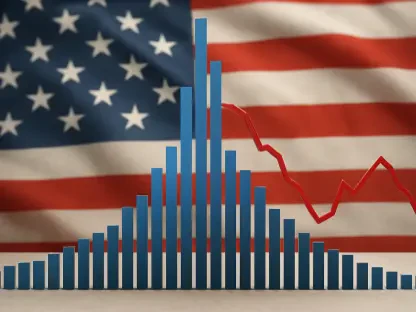I’m thrilled to sit down with Priya Jaiswal, a renowned expert in banking, business, and finance, whose deep insights into market analysis, portfolio management, and international business trends have guided investors through turbulent times. Today, we’re diving into the latest Wall Street downturn, driven by a mix of uneven corporate earnings and escalating U.S.-China trade tensions. We’ll explore the impact of specific company results, the broader earnings season landscape, and the potential ripple effects of geopolitical developments on market sentiment.
Can you walk us through the reasons behind Wall Street’s decline on Wednesday?
Absolutely, Natalie. Wednesday’s drop was a perfect storm of mixed earnings and renewed geopolitical concerns. The major indexes—Dow, S&P 500, and Nasdaq—all closed lower, with the Nasdaq taking the hardest hit at a 0.93% decline. This was largely due to weakness in tech and communication services sectors, which are heavily weighted in the Nasdaq. Investors were spooked by disappointing earnings from big players like Netflix, coupled with reports of potential U.S. export curbs to China. It created a risk-off sentiment that dragged the markets down.
How did specific earnings reports play into this downturn?
Several standout reports shaped the mood. Netflix, for instance, saw its stock plummet 10.1% after missing quarterly profit expectations, which raised red flags about its valuation. Texas Instruments also hurt the tech space with a dismal fourth-quarter forecast, causing a 5.6% drop in its shares and pulling down the broader Philadelphia Semiconductor Index by 2.4%. On the flip side, Intuitive Surgical jumped nearly 14% after beating earnings, showing that not all news was bad—but the negative reports carried more weight that day.
What role did the news of potential U.S. export restrictions to China have on the market’s reaction?
The news hit like a bombshell, especially for tech and industrial sectors. Reports suggested the Trump administration is considering curbs on a wide range of exports to China that use U.S. software—from laptops to jet engines. This escalated fears of retaliation, especially since it’s seen as a response to China’s restrictions on rare earth exports. Investors are worried about supply chain disruptions and shrinking profit margins for companies reliant on global trade, which amplified the sell-off in riskier assets like tech stocks.
Shifting to the broader U.S.-China trade tensions, what are the key developments we should be aware of?
We’re seeing a tit-for-tat dynamic unfold. The potential U.S. export curbs are a direct counter to Beijing’s rare earth restrictions, which are critical for tech and manufacturing. Meanwhile, President Trump mentioned he expects a “very successful meeting” with President Xi Jinping later this month in South Korea, though he also hinted it might not happen. This uncertainty keeps investors on edge, as any misstep could deepen the trade rift and impact global markets further.
Looking at individual company performances, what can you tell us about why Netflix’s drop was so significant?
Netflix’s 10.1% slide was a wake-up call for investors. The company missed profit targets, and at a time when valuations in the streaming space are sky-high, that’s a big problem. It signals to the market that growth might be slowing or that competition is eating into margins. Investors aren’t showing much patience for misses right now, and this drop reflected broader concerns about whether tech giants can sustain their lofty expectations.
How are investors interpreting the current earnings season as a whole?
It’s a mixed bag, but there’s some optimism. About 86% of companies that have reported so far have beaten Wall Street estimates, which is impressive. Analysts now expect S&P 500 earnings to grow by 9.3% year-over-year for the third quarter, up slightly from earlier projections of 8.8%. However, the market’s reaction to misses—like Netflix or Texas Instruments—shows a lack of tolerance. Investors are rewarding outperformers but punishing underachievers harshly, which tells us sentiment is cautious despite the strong numbers.
Can you break down how the major stock indexes performed during this downturn?
Sure, let’s look at the numbers. The Dow Jones Industrial Average fell 334.33 points, or 0.71%, closing at 46,590.41, driven by broad-based selling amid earnings disappointments. The S&P 500 dropped 35.95 points, or 0.53%, to 6,699.40, with industrials leading the declines among its sectors. The Nasdaq Composite saw the steepest fall, down 213.27 points or 0.93% to 22,740.40, largely due to tech and communication services weakness. It’s a clear snapshot of how sector-specific issues can weigh on the broader market.
What’s your forecast for how these trade tensions and earnings trends might shape the market in the coming weeks?
I think we’re in for a choppy ride, Natalie. The U.S.-China trade developments, especially around the potential Trump-Xi meeting, will be a major driver of volatility. If there’s no resolution or if tensions escalate, we could see more pressure on tech and industrials. On the earnings front, while the season looks strong overall, any further high-profile misses could dent confidence, especially in overvalued sectors. Investors will be laser-focused on guidance for the next quarter, and I expect markets to remain sensitive to both corporate results and geopolitical headlines in the near term.









